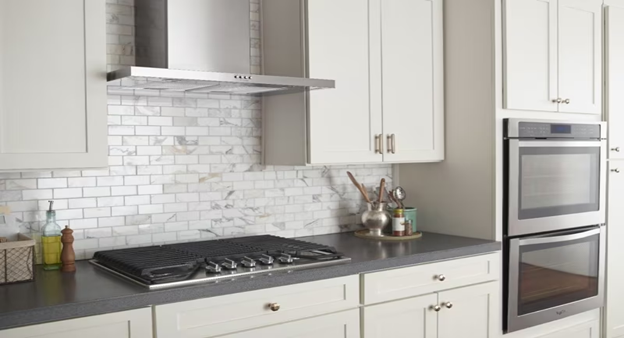When it comes to renovating a bathroom, selecting the right tiles is a crucial decision that can significantly impact the overall aesthetics, functionality, and durability of the space. Tiles not only protect walls and floors from water damage but also add a touch of style and personality to your bathroom. With an array of materials, colors, sizes, and patterns available, choosing the perfect tiles for your bathroom can be a daunting task. This guide aims to simplify the process, providing you with essential considerations and practical advice to make an informed choice that suits your taste and needs.
Understand Your Needs and Preferences
Before diving into the vast world of bathroom tiles, it’s important to assess your specific needs and preferences. Consider factors such as the size of your bathroom, the amount of natural light it receives, and your desired maintenance level. For smaller bathrooms, light-colored tiles can make the space appear larger and brighter. If you’re looking for low-maintenance options, ceramic or porcelain tiles are excellent choices due to their durability and ease of cleaning.
Consider the Material
The material of the tiles you choose plays a significant role in their appearance, durability, and suitability for different areas of the bathroom. Popular materials include ceramic, porcelain, natural stone, and glass. Ceramic and porcelain tiles are highly versatile and resistant to moisture, making them ideal for bathroom floors and walls. Natural stone tiles, such as marble, granite, or slate, offer a unique beauty but require more maintenance to prevent staining and water damage. Glass tiles add a contemporary touch and are great for creating feature walls or accents.
Evaluate Tile Sizes and Patterns
The size of the tiles can dramatically affect the look and feel of your bathroom. Larger tiles can create a seamless, spacious effect and are generally easier to clean due to fewer grout lines. Smaller tiles, on the other hand, are better suited for creating intricate patterns or adding texture to the bathroom. When it comes to patterns, consider the style of your bathroom. Geometric patterns can add a modern edge, while traditional patterns like subway tiles offer a timeless look.
Selecting the Right Color
Color is a powerful design tool that can influence the mood and atmosphere of your bathroom. Neutral colors like white, beige, or grey are classic choices that create a clean, serene environment. They also offer great versatility, allowing you to easily update your bathroom’s look with different accessories and decor. For a bolder statement, consider vibrant colors or contrasting color schemes. However, it’s important to keep in mind that darker colors may make a small bathroom feel more cramped.
Focus on Durability and Slip Resistance
The bathroom is a high-moisture area, so it’s essential to choose tiles that can withstand humidity and water exposure. Porcelain tiles are known for their low water absorption rate, making them an excellent choice for bathrooms. Additionally, consider the slip resistance of floor tiles, especially if you have young children or elderly family members. Textured tiles or those with a matte finish can provide better grip and reduce the risk of slipping.
Factor in the Budget
Tile prices can vary widely based on the material, size, and design complexity. It’s important to set a realistic budget for your bathroom renovation project. Keep in mind that in addition to the cost of tiles, you should also consider the expenses related to installation and any necessary underlayment or sealing for certain types of tiles. Comparing prices from different suppliers and looking for discounts on discontinued lines can help you find high-quality tiles within your budget.
DIY Bathroom Renovation: Enhancing Your Space
Taking on a bathroom renovation project yourself can be a rewarding experience, allowing you to personalize your space while potentially saving on labor costs. From selecting the perfect tiles to the installation process, every step offers an opportunity to bring your vision to life. For those embarking on this journey, accessing comprehensive resources and guides can provide invaluable support and ensure a successful transformation of your bathroom.
Implement Tiling Best Practices for Optimal Results
Whether you’re a seasoned DIY enthusiast or a first-timer, following best practices in tiling is crucial for achieving professional-looking results. This includes proper surface preparation, choosing the right adhesive, ensuring waterproofing in wet areas, and meticulous tile alignment and spacing. By adhering to these principles, you can enhance the longevity and appearance of your tiled surfaces, making your bathroom renovation a worthwhile investment.
Seek Professional Advice When Needed
While many aspects of bathroom tiling can be managed as DIY projects, some situations may require professional expertise. Complex layouts, the use of delicate materials like natural stone, or the need for specialized waterproofing are instances where hiring a professional tiler can be beneficial. Their experience and skills can help avoid costly mistakes and ensure that your bathroom tiles are installed correctly and durably.
In conclusion, choosing the right tiles for your bathroom involves a careful consideration of your needs, preferences, and the specific characteristics of different tile materials and designs. By taking into account factors such as durability, maintenance, aesthetics, and budget, you can select tiles that not only enhance the beauty of your bathroom but also contribute to its functionality and longevity. Whether you opt for a DIY approach or seek professional assistance, the key to a successful bathroom renovation lies in meticulous planning, quality materials, and adherence to best practices in tiling.

